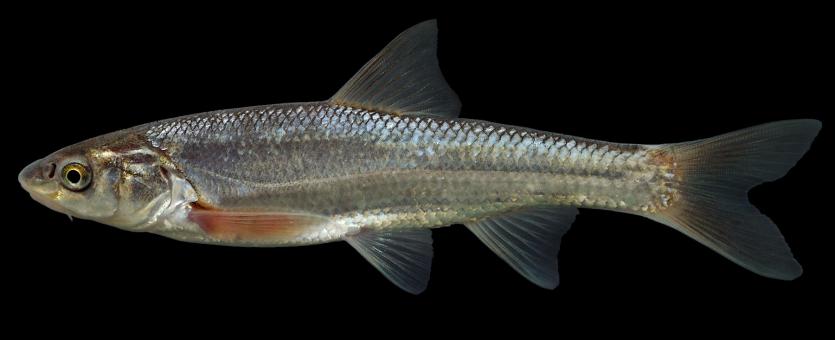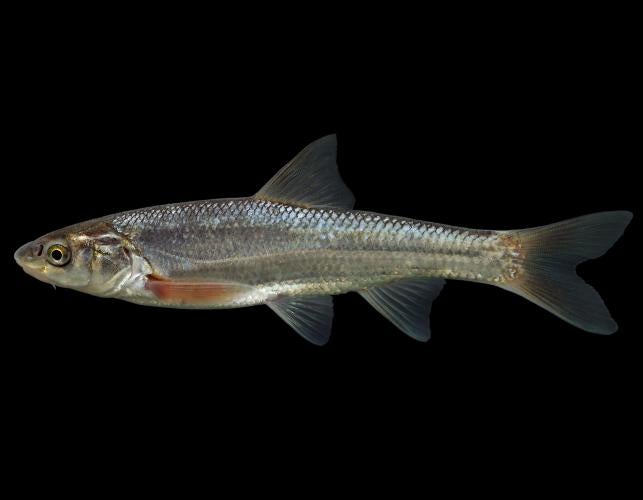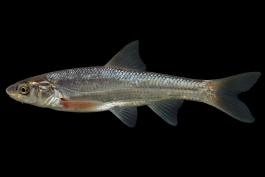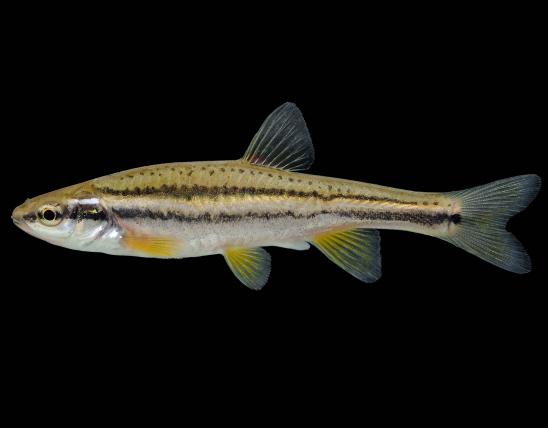
A slender, silvery minnow with small eyes, a large, slightly oblique mouth, and sickle-shaped, pointed, pectoral fins. Head distinctively wedge-shaped in profile. Mouth with a small barbel at corner. Snout flattened and rather pointed, projecting slightly beyond upper lip.
The back is light brown; the sides and belly are silvery-white without definite markings. The lower lobe of the tail fin is darker than the upper lobe. Breeding males are without special colors, but with very small tubercles on the upper surface of the head and body and along some rays of all fins except tail fin.

Habitat and Conservation
Food
Status
State Endangered; a Species of Conservation Concern in Missouri.
Historically the flathead chub inhabited the entire Missouri River, and some of its tributaries, and the Mississippi River between the Missouri’s mouth and the Arkansas line. In the 1940s, it made up 31 percent of all small fishes in the Missouri. By the 1980s, it was only 1.1 percent. Today, it is nearly extirpated from our state.
The rapid, fifty-year decline of this species coincided with the construction of a system of six large reservoirs on the Missouri River upstream of the state. The dams changed the flow and altered the bed load and turbidity (muddiness) of the water. The flathead chub is adapted for finding food in muddy water, where sight-feeding fish have trouble. With clearer water, sight-feeders outcompete the chubs for food.
Life Cycle
Human Connections
Ecosystem Connections


























